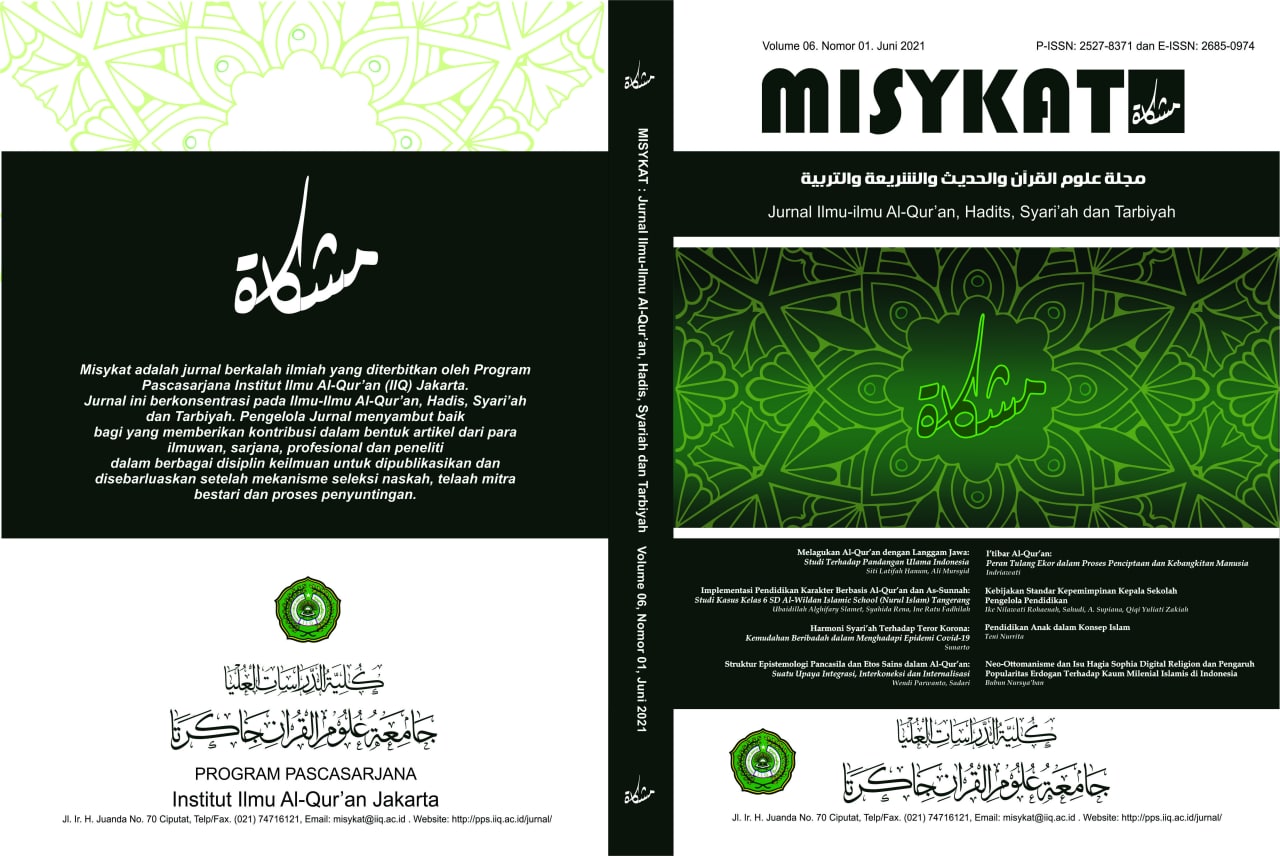Analisis Kelayakan Materi Pendidikan Agama Islam
Abstract
The research was carried out for six months, from February 2022 to July 2022. This research was a qualitative descriptive study using the library research method (content analysis), with the primary data source being PAI textbooks published by Erlangga and published by the Ministry of Education and Culture. Data collection used the method of examining class 7 PAI textbook documents, while the data analysis technique used the content analysis model from Bogdan & Biklen (1982), with procedures for 1) collecting raw data, 2) transcribing the data, coding the data, categorizing the data, and drawing conclusions. The results of the study showed that Islamic education textbooks published by Erlangga were suitable in terms of the contents of the book material. The suitability aspect of KI KD gets 100% categorized as feasible. In the aspect of accuracy, obtaining 100% is categorized as feasible. Aspects of supporting material gain by 83.33% are categorized as feasible. The suitability of the contents of the PAI Class VII book published by Erlangga obtained 92.59%, which was categorized as suitable for use. PAI textbooks published by the Ministry of Education and Culture, the suitability of the contents of the book material The suitability aspect of KI KD gets 100% categorized as feasible. In the aspect of accuracy, obtaining 100% is categorized as feasible. Aspects of supporting material gain by 83.33% are categorized as feasible. The conformity of the contents of the Class VII PAI book material published by the Ministry of Education and Culture obtained 92.59%, which was categorized as suitable for use. Thus, as a whole, PAI textbooks published by Erlangga have a suitability of the contents of the book in the content aspect of 92.59%, which is categorized as feasible.
References
Majid, A. (2007). Perencanaan Pembelajaran Mengembangkan Standar Kompetensi Guru. Bandung: PT Remaja Rosdakarya.
Mulyono, P. (2007). Staf Profesional BSNP untuk Kegiatan Penilaian Buku Teks Pelajaran. Buletin BSNP, Vol. II No.1.
Pradita, M. R., & Lubis, F. (2017). Kelayakan Isi dan Bahasa Buku Ajar Bahasa Indonesia SMP Kelas VIII Kurikulum 2013 Edisi Revisi 2017. DKI Jakarta: Kementrian Pendidikan dan Kebudayaan.
Ramad, J. (2001). Metode Penelitia Komunikasi: Dilengkapi Contoh Analisis Statis. Bandung: Remaja Rosdakarya. red. (2022). Permasalahan Buku Sekolah Sangat Kompleks. Jakarta: Kompas.
RI, K. P. (2008). Peraturan Menteri Pendidikan Nasional RI Nomor 2 Tahun 2008 Tentang Buku Pasal 4 Ayat 1 dan 2. Jakarta: Kementrian Pendidikan Nasional RI.
Sudjana, N. (1991). Dasar-dasar Proses Belajar Mengaja. Bandung: Sinar Baru.
Sugiyono. (2006). Metode Penelitian Kuantitaif, Kualitatif. Bandung: Alfabeta.
Zed, M. (2008). Metode Penelitian Kepustakaan. Jakarta: Yayasan Obor Indonesia.







